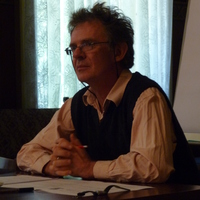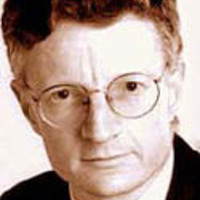Papers by Monica Tobon

The Oxford Handbook of Dionysius the Areopagite
Bonaventure, known as the ‘Seraphic Doctor’, has been described as ‘the most Dionysian mind of th... more Bonaventure, known as the ‘Seraphic Doctor’, has been described as ‘the most Dionysian mind of the Middle Ages’. Believing Dionysius to have been taught by Paul himself, he regarded him as the supreme authority on contemplation, and the Dionysian vision of creation as the ecstatic outpouring of divine eros and its return to God through hierarchically mediated reciprocal ecstasy was well suited to his desire to forge a distinctive Franciscan theological and spiritual synthesis centred on the ecstatic person of St Francis. He had access to various translations of the Dionysian corpus including one of unknown authorship possessed, and considered authoritative, by the first Franciscan school. This essay argues that, like Eriugena and Gallus, he reads Dionysius correctly rather than eisegetically in assigning an anagogical role to eros. Dionysian elements are present in every aspect of Bonaventure’s thought and at every stage of his career, and by way of illustration, this essay refers t...
The T&T Clark Companion to the Early Church, 2021
This chapter considers attitudes to disability and disabled people in the early church. Having in... more This chapter considers attitudes to disability and disabled people in the early church. Having introduced key terminology as defined within the field of Disability Studies, it outlines the Greco-Roman and biblical background and the radically innovative commitment of the early church to the intrinsic value of every human life and the provision of social care to all vulnerable people. It then surveys the birth of institutional healthcare in Egyptian and Cappadocian monasticism, perceptions of infirmity, the ascetic recasting of infirmity as weakness in which God's power is perfected, and constructions of bodily and cognitive normativity. Particular reference is made to the Cappadocian Fathers, Evagrius, Syncletica, Palladius, and Augustine of Hippo.

Vox Patrum 82, 2022
Separation, loss, confinement, and change have been imposed on entire populations du-ring the Cov... more Separation, loss, confinement, and change have been imposed on entire populations du-ring the Covid-19 pandemic in the form of lockdowns aimed at limiting the spread of the virus. They are also central to Evagrian asceticism, where they establish the conditions for the change at which the monastic life aims, namely to begin to reverse the effects of the fall by restoring the soul to health. This paper examines how they do so in order to gain an understanding of their ascetic function. Following the Introduction, it outlines Evagrius’ anthropology in order to lay the groundwork for its main theme, the healing of pathos through the practical life. Separation, loss, and confinement are each considered in turn by referencing Evagrius’ descriptions of their ascetic function and his own experience of hem. Next, the change at which they aim is described, again drawing upon a range of Evagrian material. The final section of the paper considers how Evagrius can speak to the experience of lockdown by endowing separation, loss, confinement with meaning and purpose in relation to spiritual awakening and growth, highlighting our freedom to choose our attitude to them, and acting as both our guide and our companion.
Keywords: Evagrius; separation; loss; confinement; change; lockdown; asceticism; apatheia; spiritual growth; freedom; transformation; nous; old self; new self; pathos; pathe; logismoi; Plato; Epictetus; Frankl
M. Brugarolas (ed.), Fourth Century Christology in Context: A Reconsideration, Studia Patristica 112, general editor M. Vinzent, Proceedings of the 16th International Conference on Patristic Studies, Oxford 2019. Leuven: Peeters, 2022., 2019
Paper presented at the 18th International Conference on Patristic Studies, Oxford, 19-24 August 2019

Vox Patrum 78, 2021
Gregory Nazianzus and Gregory of Nyssa between them composed three orations 'On love for the dest... more Gregory Nazianzus and Gregory of Nyssa between them composed three orations 'On love for the destitute poor' which highlight the pre-eminence for Christians of practical charity, situate lepers as its most deserving recipients, and argue that to minister to the poor is to minster to Christ himself. This paper focuses on their use of categories from Plato's Gorgias to analyse social inequity in terms of the pursuit of excess associated with the appetites and its remedy in restoring measure and balance associated with logos, appropriated by the Gregories to the Christian Logos such that the pursuit or tolerance of excess, or of its concomitants deficiency and imbalance, is shown to be incompatible with Christian faith. While the Gregories' core argument is the same, their approaches differ, Gregory of Nyssa's being more explicitly ascetic. After outlining the late antique notion of the πτωχοί and the salient aspects of Plato's Gorgias, I turn to the three orations, focusing on how they appeal to excess, measure, and balance in diagnosing soul sickness and prescribing its remedy. I conclude by discussing their anticipation of Pope Francis' call to 'go forth to the peripheries', considering who the figure of the leper symbolises for us today and, implicitly, for the Gregories, and how this discussion can illuminate the contrast between Nazianzen's and Nyssen's views of institutional care for lepers. www.voxpatrum.pl

“The Place of God: Stability and Apophasis in Evagrius”, in I. L.E. Ramelli (ed., with K. Corrigan, G Maspero, & M. Tobon), Evagrius Between Origen, the Cappadocians and Neoplatonism, in M Vinzent (ed.) Studia Patristica LXXXIV, vol. 10 (Oxford Patristics Conference, 2015), Peeters 2017 Studia Patristica, 2017
Stability and apophasis figure prominently in the writings of Evagrius as defining char- acterist... more Stability and apophasis figure prominently in the writings of Evagrius as defining char- acteristics of apatheia and pure prayer respectively. From these primary senses they reverberate throughout the spiritual life, always in reciprocal relationship mediated by the nous as the place of God. Stability and apophasis have also played a major role in Latin Christian spirituality throughout its history as distinct tributaries, Benedictine and Dionysian, of a shared Evagrian source. This article will examine the meaning of stability and apophasis in Evagrius and trace the relationship between them as it unfolds from the beginning of the monastic life to its fruition in knowledge of God. While its primary aim is to deepen our knowledge of Evagrius, it is to be hoped that it will also contribute to our understanding of the subsequent tradition. https://www.peeters-leuven.be

Studii Francescane, 2015
This paper introduces the spiritual theology of Evagrius of Pontus. It includes a description of ... more This paper introduces the spiritual theology of Evagrius of Pontus. It includes a description of how he understands the knowledge of God that is our beginning and end, and is prefaced by a reflection on the relevance of Evagrius' spiritual theology to our ecological crisis. Preamble What might a fourth-century monk of the Egyptian desert steeped in the 'wisdom of the Greeks' and the speculative theology of Origen's De Principiis have in common with St Francis of Assisi, and what might he have to say to us today? Fourteen years ago I was called to research the spiritual teachings of Evagrius of Pontus, a vocation which fitted well with my longstanding conviction that if we wish to change the world we must first change ourselves. Evagrius is a consummate guide to the human heart in both its vulnerability to sin and its capacity for God. For him the first stage of the spiritual life is devoted to loosening the grip upon us of the pathē, addictive habits of thought and affectivity which imprison us in cramped, shadowy and solipsistic worlds and prevent us from seeing clearly or living authentically as members of the Body of Christ. He describes with great insight and some gentle humour the patterns of moral blindness and self-deception that afflict us all. As we attain a measure of freedom from these through the gift of impassibility, 1 we awaken to the created order as a love letter from God, the reading of which will restore our broken relationship to both Creator and creation. The recent publication of the encyclical Laudato Si' brings such reflections into sharp focus. In two short centuries of industrialisation we have, through our intemperate consumption and dissociative understanding of progress, brought ourselves and the rest of God's creation to the brink of destruction, meaning that it has never been more imperative that with Evagrius we search within our hearts for the hidden springs of our collective malaise. If we would be free of them we must first surrender them to the Physician of Souls, and if we are to surrender them we must first recognise them. For Evagrius the unity-integrity of the created order reflects, through the richly variegated wisdom of God, the unity-simplicity of the Creator, and is mediated through his Judgment (understood in therapeutic rather than punitive terms) and Providence. Were Evagrius alive today he would regard the belief that we can be separated ontologically from the natural world, and that the natural world is itself a collection of separate parts which can be independently manipulated without consequences for the whole, as part of the epistemic fragmentation consequent upon the Fall. He is a consummately holistic thinker, while the ecological crisis 2 is the consequence of our failure to think 1 Evagrius, Scholion 199, Proverbs 19:17, Géhin, P, Évagre le Pontique: Scholies aux Proverbes, Paris 1987. 2 I prefer to avoid the term 'environment' since in this context the concept of 'the environment' is itself an abstraction from the reality it purports to refer to, and a profoundly misleading abstraction: the natural world is not simply our

Studii Franciscane: Revista Institutuli Teologic Romano-Catolic Franciscan 17 (2017), Roman, Romania: Editura Serafica, 2017
Bonaventure introduces his Journey of the Mind into God as 'the speculation of a poor one in the ... more Bonaventure introduces his Journey of the Mind into God as 'the speculation of a poor one in the desert'. His 'desert' is spiritual rather than physical, but his use of Dionysius links the main contours of his 'speculation' to the thought of the fourth century desert monk Evagrius. Even where material influence can be ruled out these two 'poor ones in the desert' are to be found thinking alike. A creative misreading of Dionysius by Bonaventure inspired by his Augustinian perspective makes the thirteenth century Franciscan in some ways a more faithful interpreter of Evagrius than the sixth century monk. This paper traces the vestiges of Evagrius in relation to the threefold way, the graded contemplative ascent, interior illumination, the apex mentis as the place of encounter with God, and the climax of the ascent in a love beyond words and intellection, and shows how Bonaventure forges elements from Gregory of Nyssa, Evagrius, Augustine, and Dionysius into an authentically Franciscan synthesis.

My paper in the present collection argues that Evagrius understands the 'raising of body and soul... more My paper in the present collection argues that Evagrius understands the 'raising of body and soul to the order of the nous' as the expansion of the whole human person from the contracted state of 'thick embodiment' which is the lot of the fallen nous, to a spaciousness in which, no longer constrained even by image or sign, it becomes once more the incorporeal place of the incorporeal God. 1 The intuitions which form the basis of Kevin Corrigan's paper would seem in many ways to parallel my own, but whereas my emphasis is upon the anthropological and physiological aspects of contemplation his is more directly contemplative and existential, and so I am grateful for this opportunity both to draw attention to what I see as areas of particular complementarity between our papers and to continue the conversation with some further thoughts of my own. Two themes are central to both our papers: first, the holistic and inclusive nature of Evagrius' spiritual vision, and second, the dialogue within it between two poles of being and experience which I refer to as 'contraction and expansion' and Corrigan calls 'suffocation and germination'. In the context of Evagrius' anthropology these two pairs of terms are essentially synonymous, although by describing the same dynamic in different ways they point to different aspects of it. I argue that for Evagrius 'contraction' and 'expansion' are not mere metaphors but refer to real phenomena, namely changes in the body's elemental mixture or constitution. It follows from my argument that what 'suffocate' the nous are the metaphorical fires of the epithumētikon, manifest in the logismoi and their inherent pathē and grounded in a heavy, earthy body destabilised by the turbulence of excessive fire. Similarly, the 'germination' of the 'seeds of virtue' is grounded physiologically in the transformation of the body's mixture from a predominance of earth to a predominance of fire, manifest in an increasingly light and expansive bodily mixture.

For Evagrius, both physical and psychological transformation are integral to spiritual transforma... more For Evagrius, both physical and psychological transformation are integral to spiritual transformation. A human being is essentially a nous that, as image of the Triune God, is itself triune, the anthropological triad of spirit, soul and body and the psychological triad of logistikon, thumos and epithumêtikon being its fragmented, post-lapsarian forms. All three parts of the human soul are, accordingly, in some sense nous, and the soul is the form of the body. The predominance of epithumia characteristic of the human soul is reflected in a predominantly earthy, 'thick' and contracted bodily 'mixture' which by means of diet can be transmuted to a lighter, more expansive constitution. This 'passage of the body from the bad to the superior quality' is reflected in that of the soul from passibility to impassibility and of the nous from ignorance to knowledge. Thus diet establishes the physical ground for the restoration of unity to the 'trinity of ours' that is the imago Dei, as body and soul are 'raised to the order of the nous' and the spiritual body emerges from the 'triple resurrection' of body, soul and spirit. The increasing expansiveness of the body's mixture is the correlate of the 'expansion of the heart' and is reflected phenomenologically in the passage of the nous into ever greater spaciousness and inclusivity as it 'approaches the unconcealed Divinity in itself.' Introducing his edition of Evagrius' letters, Fr Gabriel Bunge observes that 'a mystic writes not about something but from something, namely that unity that he himself has encountered and that informs his own life.' 1 Nowhere can this be seen more clearly in Evagrius than in his holistic understanding of the ascent to God as fully involving all three parts of the human person: spirit, soul and body, or in Evagrius' terms, nous, soul and body. All three rise together in a tripartite resurrection in which each finds renewal according to its particular nature, meaning that for Evagrius contemplation is rooted as much in the transformation of the body as in that of the soul. The first three sections of this paper develop an interpretation of Evagrius' anthropology, focusing respectively on the anthropological triad of nous, soul and body; the psychological triad of logistikon, thumos and epithumētikon, and the genesis of the physical body. From the latter it emerges that for Evagrius physical constitution is a function of spiritual condition and therefore mutable, and following on from this I argue in Section Four that the transformation of the body's elemental mixture forms the basis for the restoration of spiritual health to body and soul in the process that Evagrius identifies with their respective 'resurrections'. In Section Five I explain how this process continues in the contemplative ascent as the 'raising of the body and soul to the order of the nous', that is to say, the 'resurrection of the nous', and how it finds reflection in the experience of the contemplative. Finally, in Section Six I argue that Evagrius tacitly invites us to equate his 'intelligible body', as the composite of perceptible body and (fallen) soul, with Paul's 'animal body' and therefore to understand the process of 'raising of body and soul to the order of the nous' as the genesis of the spiritual body.
Supplement to Studia Patristica 57 (Leuven: Peeters, 2013), 2013

Proceedings of Origenianum Decimum: Evagrius as Writer, 2009
Evagrius as writer: the example of Eulogios 2's discussion of xeniteia As a writer, Evagrius is a... more Evagrius as writer: the example of Eulogios 2's discussion of xeniteia As a writer, Evagrius is associated with a pithy apophthegmatic style whose roots, as Harmless points out, are to be found above all in " the terse wisdom and the great silences of Egyptian monasticism " 1. The treatise To Eulogios: On the Confession of Thoughts and Counsel in Their Regard (Πεπὶ λογισμῶν ἐξηγοπίαρ καὶ σςμβοςλίαρ. Ππὸρ Εὺλογιον) is an exception to this rule. 2 One of Evagrius " longest works, it comprises a detailed exposition of the ascetic life in a discursive format that allows its author a narrative freedom precluded by his usual minimalism. Its second chapter-the first of the treatise proper, following a dedicatory prologue to the monk Eulogios 3-exploits that freedom to powerful effect, with Evagrius availing himself of conventional Christian and pagan motifs, Scriptural allusion and autobiographical elements to paint a vivid picture of the experience of the desert monk. The treatise begins where the ascetic life begins, with what Evagrius calls xeniteia, " voluntary exile " 4. For him this means renunciation of the secular world, not just in physical terms, but, more fundamentally, in the sense of overcoming the psychological habit of unreflective immersion in sensible reality, the result and symptom of the choice of the nous to turn away from God, and the expression and perpetuator of its resulting fragmentation. Accordingly, Eulogios 2 centres upon the inner conflict that is the lot of the fallen nous. It has three sections. The first sets up the characterisation of xeniteia as a spiritual contest, the second describes the sort of agôn or peirasmos that the contestant must face, and the third instructs him in how to prevail. The chapter opens with an appeal to the monk as spiritual athlete: πξώηε ηῶλ ιακπξῶλ ἀγσληζκάησλ ἐζηὶλ ἡ μεληηεία The first of the illustrious contests is voluntary exile With these words Evagrius echoes Paul " s use of athletic imagery to symbolise spiritual struggle 5 and also follows Athanasius who, in describing Antony as " daily a martyr to his conscience, and contending in the conflicts of faith " (θαζ' ἡκέξαλ καξηπξῶλ ηῇ ζπλεηδήζεη

This thesis is to my knowledge the first full-length examination of Evagrian apatheia. Chapter On... more This thesis is to my knowledge the first full-length examination of Evagrian apatheia. Chapter One contextualises Evagrian apatheia by outlining Evagrius' cosmology and anthropology. Attention is drawn to the centrality within them of the distinction be-tween unstable and stable movement and to Evagrius' characterisation of apatheia and empatheia in these terms. Apatheia, as the stable movement of the soul, is noted to be the foundation for the transformative contemplation by means of which the fallen nous re-ascends to union with God. The anthropology section describes Evagrius' understanding of the nous, soul, body and heart. Chapter Two examines the psychology and phenomenology of empatheia. Section One focuses upon the logismoi, discussing what Evagrius means by the term logismos, noting the inherence of pathos to the logismoi, explaining his concept of the 'matter' of the logismoi and discussing his eightfold classification of 'most generic logismoi'. Section Two focuses upon pathos, discussing the meaning of the term within Greek philosophy, how Origen understands it and how Evagrius himself understands it. It then discusses the cognitive 'building blocks' of the logismoi, the empathē noēmata and the arousal of pathos. Section Three describes the phenomenology of empatheia. Chapter Three establishes that the subject of apatheia is the tripartite soul in its entirety, then adduces evidence for apatheia's being the stable movement of the soul. It then dis-cusses Evagrius' spiritual characterisations of apatheia – first as death and resurrection and then as love and knowledge, the latter including practical moral knowledge as well as knowledge of transcendent realities. The holistic, embodied nature of spiritual knowledge as understood by Evagrius is emphasised, as is the inseparability of knowledge from love. His understanding of apatheia is shown to be profoundly Christian, and in particular Pauline. Following a discussion of how apatheia is attained, the chapter concludes with a summary description of apatheia as understood by Evagrius.
Talks by Monica Tobon
Reviews by Monica Tobon
Book Reviews by Monica Tobon
The Classical Review 71.2, 2021
The Classical Review 71.2, 2021
The Classical Review 68.1, 2018
The Classical Review 70.2, 2020











Uploads
Papers by Monica Tobon
Keywords: Evagrius; separation; loss; confinement; change; lockdown; asceticism; apatheia; spiritual growth; freedom; transformation; nous; old self; new self; pathos; pathe; logismoi; Plato; Epictetus; Frankl
Talks by Monica Tobon
Reviews by Monica Tobon
Book Reviews by Monica Tobon
Keywords: Evagrius; separation; loss; confinement; change; lockdown; asceticism; apatheia; spiritual growth; freedom; transformation; nous; old self; new self; pathos; pathe; logismoi; Plato; Epictetus; Frankl